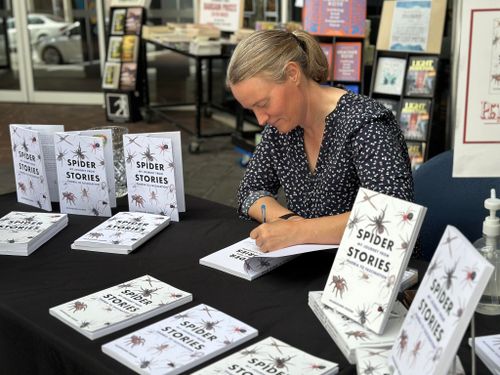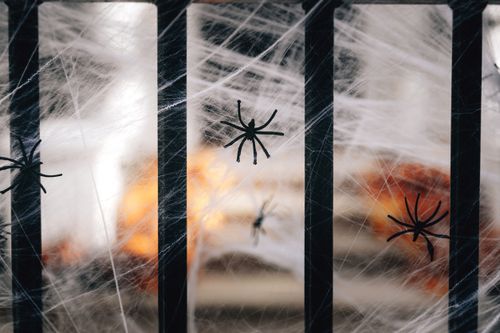Then there’s a prickly feeling snaking up the arms and neck, shallow breaths or wave of nausea.
That’s what Hildegunn Hodne, who lives in Tasmania, once felt during Halloween.

“Just looking at pictures of a spider would set off my phobia, so I would be jittery and sweaty,” Hodne, originally from Norway, tells 9news.com.au.
“I often might have to go and have a shower just to get rid of that sensation on my skin that there might be a spider around.”

It wasn’t the comically large spider decorations which would awaken Hodne’s phobia.
She said it was the scary-looking small creepie crawlies which were hard to discern from real ones.
“When someone’s decorated with a spider that could be the same size as a live spider, then it would trigger my fears,” Hodne said.
The author and illustrator would “steer clear” of any decorated houses because of how uncomfortable it made her.
Thankfully, most of this fear is in the past.

Hodne describes herself as “100 per cent cured” thanks to exposure therapy from writing her book Spider Stories: My Journey from Phobia to Fascination.
“I also work as a gardener, so I encounter them on a regular basis, and it’s curiosity that’s triggered now and not fear.”
Halloween is still a tough time for a lot of people suffering from arachnophobia.
One woman from Five Dock in Sydney’s Inner West took to her local Facebook group to call for compassion for arachnophobes during the spooky season.
She urged people to avoid putting fake spiders near fences or on gates in her neighbourhood because it’s “limiting where I can walk”.
Inner West locals love to embrace Halloween, particularly in areas like Five Dock, Lilyfield, Leichhardt and Balmain, where dozens of houses are draped in decorations.
While her plea elicited some light-hearted banter from locals, clinical psychologist Dr Sophie Li said the fear is no laughing matter.
Li ran a workshop in 2017 to help arachnophobes overcome their phobia and said fake spiders can trigger the same troubling anxiety as real ones.

“Images of spiders, spiders on the television, diagrams of spiders in biology textbooks, toy spiders… they would certainly be things [they] avoid because it produces an anxiety response,” Li said.
“A lot of people don’t understand or they can’t empathise with just level of distress people with phobias have, they will think the fear is extreme and excessive.
“It’s not just a little bit of discomfort. It’s a flight or fight response. It’s pounding hearts, it’s sweating, it’s trembling, it’s sometimes it’s actually freezing and not even being able to move, so the reactions can be quite extreme.”
Li said exposure therapy, much like how Hodne overcame her fear, is “unequivocally the best therapeutic approach” for kicking a spider phobia to the curb.
“It’s getting a person to confront their fear, but in a really manageable, graded kind of way,” she added
“It is a really, really effective form of treatment if it’s delivered in the right way by the right professional and if the person is engaging in the process.”






